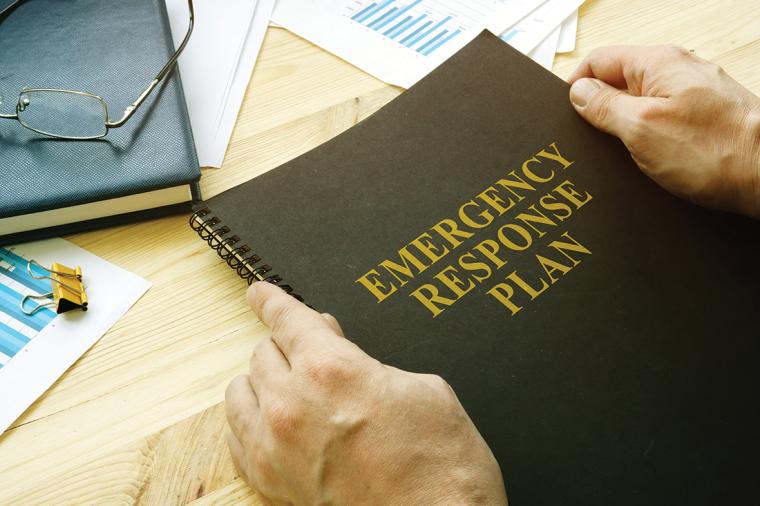
During a Monday night football Game just after the turn of the new year, millions of viewers witnessed the live scene of Buffalo Bills player Damar Hamlin collapsing on the field and going into cardiac arrest after tackling a Cincinnati Bengals player. Medical personnel went into immediate action performing CPR and using the emergency ambulance already stationed at the stadium. The NFL Chief Medical Officer affirmed that the quick reaction and immediate care provided to Hamlin were crucial to saving his life.
It served as a reminder to sports organizers nationwide that it was necessary to have plans in place for medical services and support. Health and safety, everyone realized, must be considered at every stage of an event including before, during and after. Even though the world is now post-COVID, recalling the horror stories of “super-spreaders” has kept event planners and medical personnel on high alert.
Beyond the sudden unexpected emergency such as the Hamlin incident, event organizers and rights holders should consider the possibility that COVID can still present a health threat in addition to other infectious/transmittable diseases such as the flu or measles. However, venues have removed restrictions for patrons and the Centers for Disease Control now recommend only preventative measures. Venues must continue to support those who choose to continue wearing masks and practice social distancing. Additionally, hand sanitizers are a must in common areas such as entrances, food distribution centers, midways, concourses, and restroom facilities.

The planning and preparation of medical support in the post-COVID reality should prioritize strategies to protect attendees, performers/participants, broadcasters, facility staff and support personnel. Everyone involved with protecting the health and wellbeing of others in conjunction with events must remember and consider all possible scenarios and contingencies to keep patrons safe and to save lives if an unforeseen tragedy should occur. The figure below “Medical Services Planning,” illustrates the relationship between medical-related information and the four stages of operations which include preparation, implementation, contingencies, and post-evaluation.
Preparation
The first step in preparing the medical services for an event is the creation of the chain of command. The figure entitled “Medical Services Chain of Command” identifies the personnel and processes for medical services of an event. The creation of the diagram to depict the reporting line or chain of command is the responsibility of the venue owner or manager. Just as a company has an organizational chart, so too should a single event have an “organizational chart” for medical services and response teams that must work in conjunction with the senior event manager.
The organizational chart must consider the coordinated areas of medical service and each area must have its own responsible leader with clear and decisive responsibilities that communicate with other areas. These responsibilities should not overlap since such a scenario can create chaos or unnecessary duplication of the same response. The brevity and complexity of the organizational chart vary depending on the size of the venue and the number of guests and workers.

In the preparation stage, the event coordinator must initially consider every component that is necessary to ensure a safe and healthy environment for all, regardless of whether or not a medical emergency arises. The next step, which is by far the most important, is identifying and hiring the right personnel with the necessary people skills and clinical capabilities to work the event. Once the staff is hired and trained in his or her role, the third and final step in preparation is simply checking to ensure all necessary items are in place including medical purchases, testing of equipment, EMS communication, adherence with all sanctioning policies and procedures, and the sterilization/cleaning of the facility. The most efficient means to address all the components is to simply make a comprehensive checklist, Gantt chart, or Lucid flow diagram.
The venue sterilization and cleaning should also have a documented work schedule approved by the local health commissioner or health department. Also, state and federal agencies may have identified sterilization or cleaning requirements such as hand sanitizer stations. These policies must be continuously reviewed and followed.
The Preparation step should include a means of identifying the various types of medical services staff. Uniforms or a dress code can assist with communication, response and recognition for all in attendance. The opportunity to generate indirect income or reduce expenses and promote a local health facility exists if permitting advertising on uniforms, medical bags and transport equipment.
Finally, the stocking of medical services supplies should occur prior to an event with a concise restocking program in place prior to the next event. This step is particularly important for athletic training supplies and AED machines.
Implementation
The implementation stage of medical services occurs during the event. The risk of an adverse situation is minimized when the preparation and planning process has had a careful and thorough review.
It is obvious that prior to an event, a venue must have the appropriate general liability insurance, as well as malpractice insurance if the venue hires medical personnel. It is also recommended that these policies are reviewed periodically and checked especially prior to any major event so that the venue has confirmation of having the appropriate insurance.
Medical staff must remain after the event to support participants or patrons incurring any injuries on site and to be sure that all attendees leave the premises without incident.
Contingencies
The contingency stage refers to the unexpected or unimaginable situations that may occur prior to, during or immediately after an event. From a spectator going into labor, to a life-threatening traffic accident in the parking lot, to a natural disaster such as an earthquake, there are countless unanticipated situations that will call for the response of medical personnel. Onsite personnel such as athletic trainers, physical therapists, physicians and mid-level providers may be required to provide an immediate response without jeopardizing the health of participants.
Post-event evaluation and feedback
The final post-event evaluation stage and feedback loop require time and attention as similar and future events may be reoccurring with short notice. Once the staff at a venue can experience a sigh of relief as the last car leaves the parking lot, the medical services personnel should take the time to thoroughly document any incidents and brainstorm any potential contingencies.
Reporting of certain health events may be required by sanctioning bodies and/or medical personnel for follow-up. The concussion management protocol, for example, requires documentation and additional action. Restocking all utilized supplies as needed is also a post-event activity. Re-evaluating processes and procedures several times ensures efficiency and error reduction which are crucial to medical operations at events.
The Final Word
As the world moves forward to greet guests and produce events, managers and coordinators must still be mindful that medical services requirements are critical for public safety and may routinely save a life. Event organizers should be creative and think of all possible realistic scenarios and contingencies in their planning.
Meeting with a group of employees several times prior to an event and brainstorming any possible situation that may occur can impact the outcome and protection of everyone at the venue. The right step at the right time could literally be the difference between someone’s life and death. Just ask Damar Hamlin. SDM


